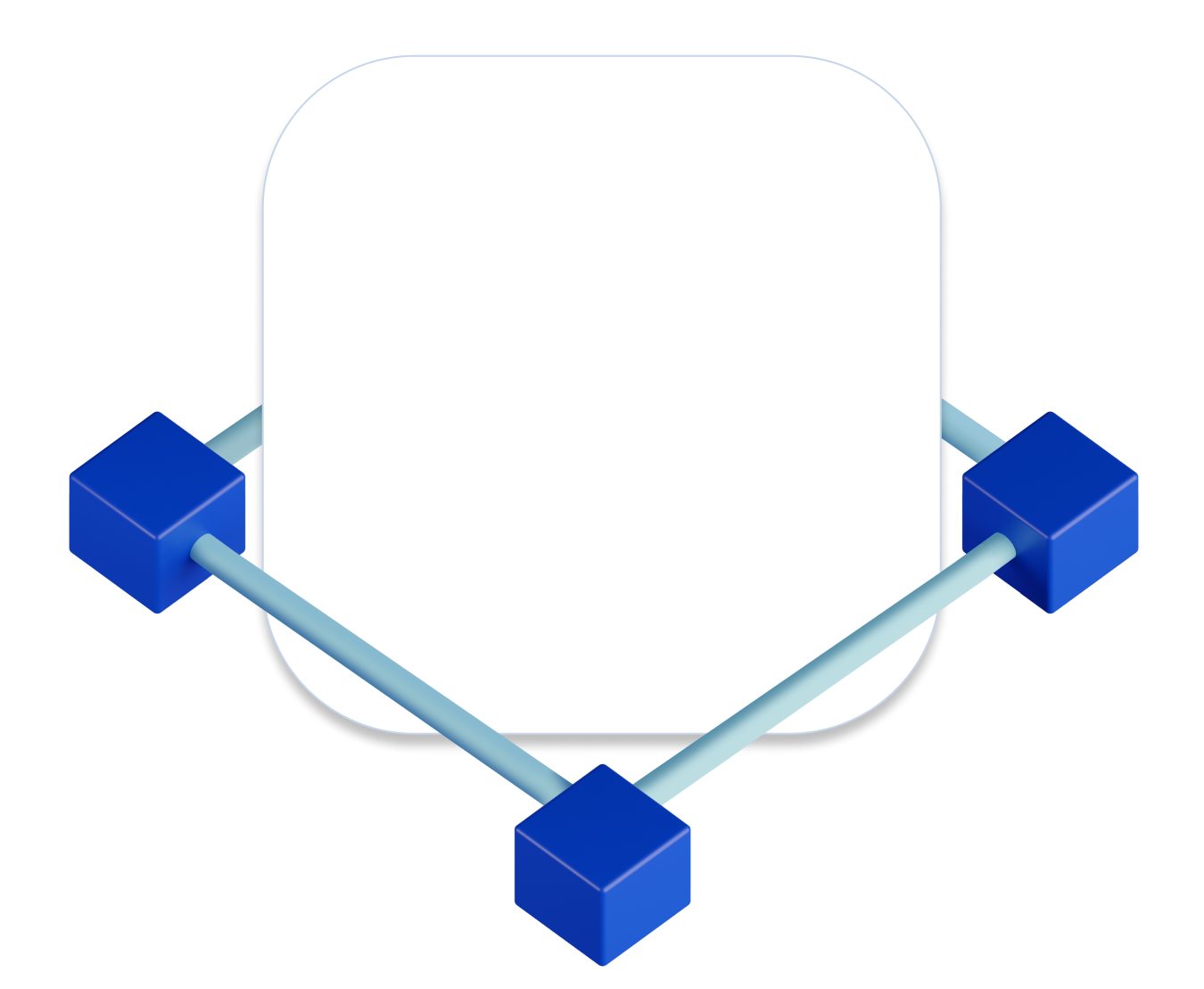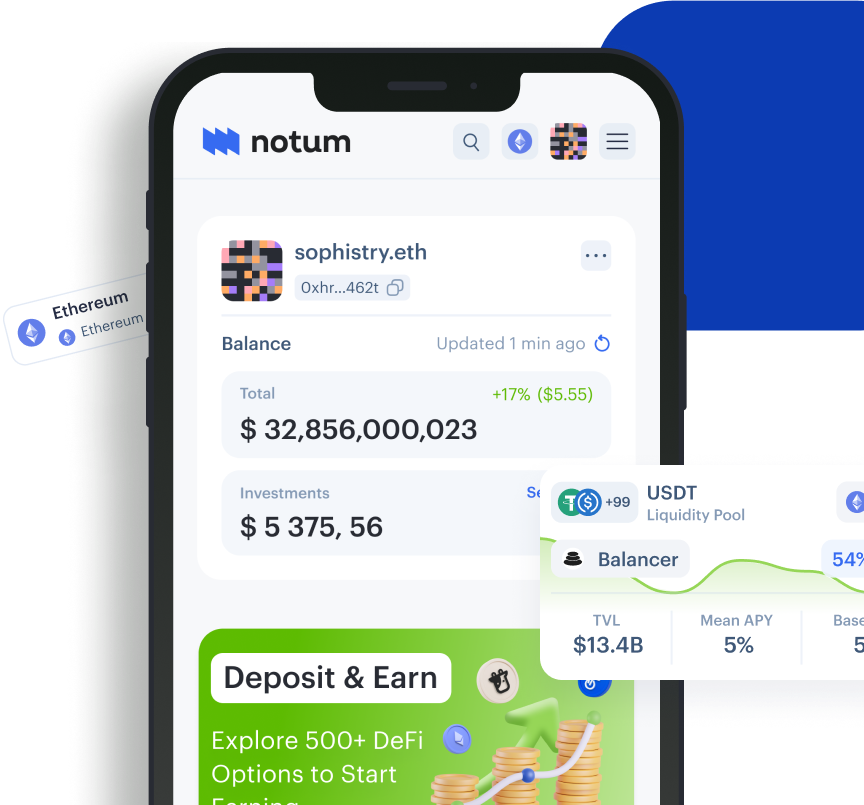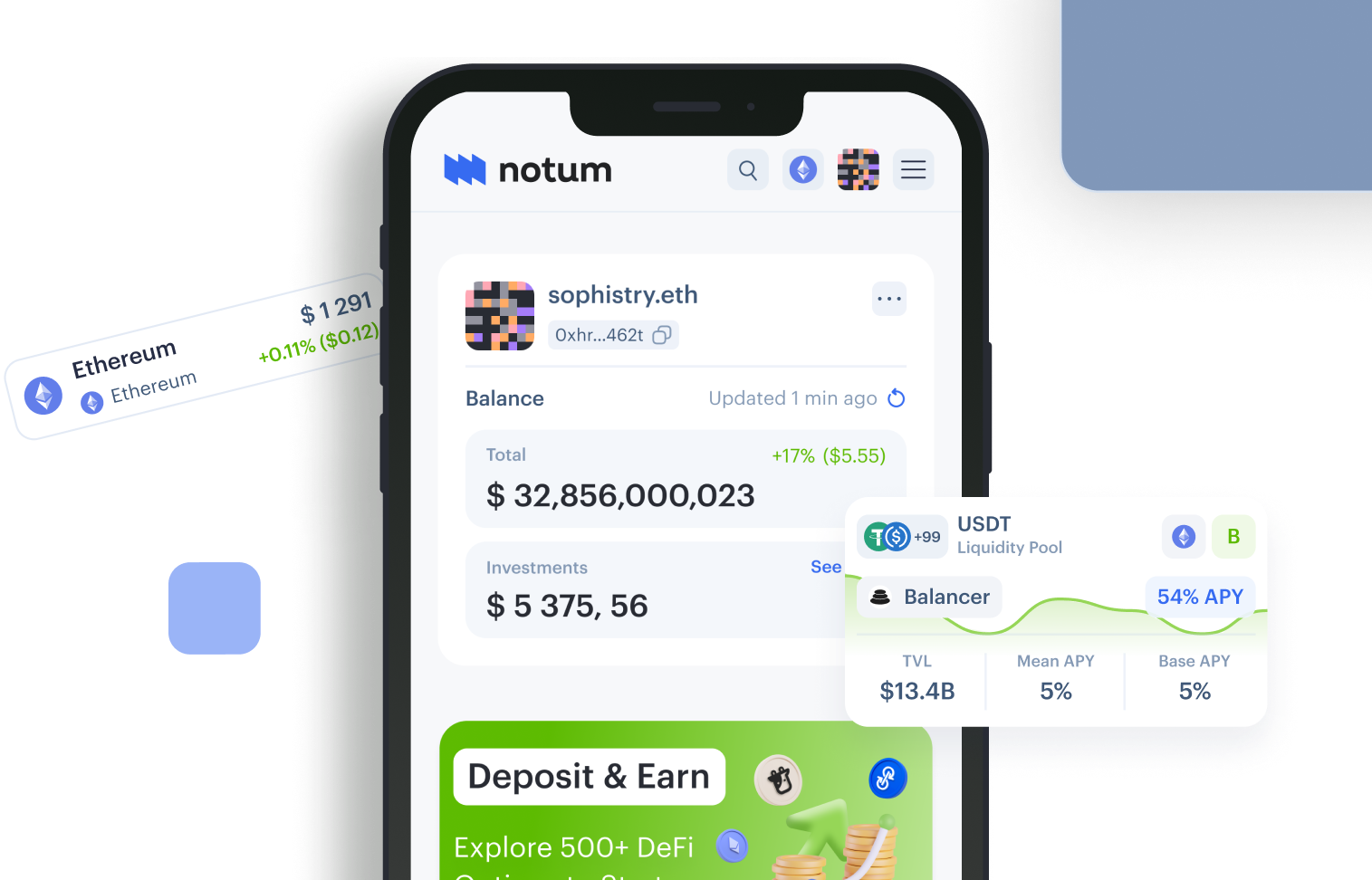Camelot V2 Protocol
Boost your income with Camelot V2 and Notum


Camelot V2 Protocol Stats
$ 19.5M
Total TVL Across All Supported Networks
Medium Risk
Generally considered as balanced risk-reward investment
Active
Hands-on management for higher returns
6.22%
Average APY you can expect on Notum
How to Invest in Camelot V2 on Notum
Despite the variety of opportunities provided in the crypto world, liquidity pool provision is a type of investment that never loses its popularity. Liquidity pools themselves are a collection of assets invested in smart contracts that are used in the DeFi space for various purposes, such as lending, trading, and such.
Liquidity pools allow users to earn while providing liquidity on decentralized exchanges and other DeFi platforms. These platforms use automated market makers (AMMs), that is, algorithms that replace actual market makers with liquidity pools. This makes cryptocurrency trading free and secure as users invest with smart contracts instead of interacting with each other.
Now there are multiple platforms for liquidity pool provision that offer users secure and profitable pools for investing. They may vary depending on supported blockchains, rewards, number of pools, unique features, etc. Notum walks you through the Camelot DEX platform, paying special attention to its benefits, native token, and possible risks. The most important part is Camelot’s investment strategies that you should consider to generate more crypto rewards.
Camelot V2: the Essentials
- TVL: $44,39M
- Average APY: 6.61%
- Risk Level: Medium
- Blockchains: Arbitrum
- Foundation Date: 2022
In crypto world, Camelot is known as a community-driven DEX and Launchpad built on Arbitrum. However, Camelot was originally created as a customizable protocol, offering users high efficiency and the ability to use its unique infrastructure for adaptable and sustainable liquidity.
The main goal of Camelot Exchange is to provide the Arbitrum ecosystem with a wide variety of innovative features that will allow protocols to gain more flexibility and control over their liquidity. Moreover, new protocols seeking to build on Arbitrum will also be able to receive all the necessary support and tools for launch and sustainable growth through Camelot. Thus, Camelot aims to become Arbitrum’s native DEX.
«Camelot moves beyond the traditional design of DEXs to focus on offering a tailored approach that prioritises composability» - Camelot Docs.
Besides, Camelot has its own launchpad, namely custom-built infrastructure for Arbitrum native sales. As this ecosystem-driven platform is more than just a DEX, it aims to become the go-to launchpad for other promising protocols on Arbitrum.
Interesting fact: Camelot itself was also launched via launchpad, indicating that this could be a really good start for decentralized projects.
Camelot's V2 AMM
Camelot is based on a feature-rich dual AMM that can support both stable and volatile swaps. Other innovations include the introduction of dynamic directional fees for trading pairs, which not only makes it possible to set different fees for each pool, but also to vary fees depending on the swap (buying or selling).
«These innovative AMM features allow us to provide pool configurations that are much more customized and tailored to the specific trading pairs» - Camelot Docs.

Source: Camelot Docs
Camelot V3
V3 is an updated version of the platform, providing users with new features and improvements over Camelot V2. The main ones include V3 AMM, which is based on the highly efficient and feature-rich Algebra v1.9 codebase. This AMM is more efficient in terms of customer focus and easily adapts to the requirements of Camelot and Arbitrum. Moreover, V3 AMM has spNFT, Nitro tech, and concentrated liquidity integrated into it.
Camelot V3 has a lower slippage, as well as reduced gas fees, which is an advantage for many investors. Other differences between V2 and V3 are:
- Concentrated liquidity. V3 introduces concentrated liquidity, which allows Camelot users to set a custom price for their tokens.
- Improved capital efficiency. V3 liquidity range orders allow traders to make more efficient trades, which lets them not only control the price but also adjust positions depending on market conditions.
- Custom tickpacing. With Camelot V3, users have greater control over their liquidity via creating custom ticks.
More information about the difference between V2vs V3 can be found in the official Camelot docs.
GRAIL Token
Camelot has its own native cryptocurrency - GRAIL. Users can earn Camelot’s token as a reward on inspired staking positions or through farming after creating an spNFT. In addition, the token can be purchased on Camelot through the exchange tab. Maximum supply of Camelot crypto is 100,000 GRAIL, and the price as of March 18, 2024 is $1,863.
GRAIL is used to pay transaction fees on the Camelot network. This token can also serve as a collateral in lending and borrowing protocols that support it.
In addition to GRAIL, Camelot has a non-transferable escrowed governance token xGRAIL, corresponding to staked GRAIL, which main goal is to allocate it to plugins. More information about Camelot’s GRAIL and xGRAIL can be found here.
GRAIL economics of Camelot is well designed. Camelot motivates users to hold $GRAIL for the long term and has applied a number of token deflationary mechanisms to incentivize the growth of $GRAIL in the long-term value.

Source: Camelot
Why Invest in Liquidity Pools with Camelot?
Liquidity pools undoubtedly play a fundamental role in the DeFi space as they allow users to make swaps and incentivize them to provide liquidity. However, despite the pool’s importance for the ecosystem, they also have a large number of advantages for investors. Camelot DEX is an excellent choice for providing liquidity for the following reasons:
Pros
Permissionless Nitro Pools
Through such pools, projects can directly interact with Camelot and have full control on their incentives. Moreover, the platform gives them enough flexibility to build the type of liquidity they need for promotion, and even provides a unique strategy to achieve their goals.
High rewards
Depending on the chosen liquidity pool, Camelot provides users with fairly high rewards for depositing assets and participating in the ecosystem’s security.
Dynamic directional fees
Since Camelot is based on dual AMM, it allows to set different fees on different pools and provide pool configurations that are much more tailored to specific trading pairs.
Stable pools
These pools on Camelot V2 use liquidity more efficiently as they concentrate most of their liquidity in current prices. Thus, while making a trade, the pool can adjust the price so as to move to the area with the highest liquidity without losses.
Security level
Camelot was audited by one of the most prestigious smart contract security firms, Paladin, which indicates the platform’s proper level of security. On top of that, Camelot uses multi-signature, which also makes theft of crypto assets pretty complicated.

Source: Camelot Audit Reports by Paladin
Camelot V2: Investment Strategies
Notum offers different liquidity pools on Camelot V2, but let’s take a look at two popular Camelot strategies for liquidity pool investment in 2024. With Notum, the process of depositing assets into pools becomes as simple and safe as possible, so we advise you to consider investing on this platform.
https://app.notum.ai/investments/0x6a78e84fa0edad4d99eb90edc041cdbf85925961?protocol=Camelot+V2&chainId=42161
This investment strategy on Camelot V2 allows users to invest their AIDOGE and WETH assets into a liquidity pool to earn rewards. Since this pool has a TVL of over $3.7 million, it is a fairly safe option for providing liquidity. Speaking of rewards, users investing in AIDOGE-WETH on Arbitrum receive a total APY of 7.55%.
https://app.notum.ai/investments/0xc9da32c3b444f15412f7feac6104d1e258d23b1b?protocol=Camelot+V2&chainId=42161
Another popular investment strategy on Arbitrum allows users to receive rewards for depositing assets into the GRAIL-ARB pool. This strategy on Camelot V2 also has a fairly large total value locked of over $1 million, which also indicates the reliability of this strategy. Moreover, GRAIL-ARB investors receive high rewards about 20.19% total APY.
If you want to invest in one of the most profitable Camelot V2 strategies on Notum, you can invest in the DMT-USDC pool with a total APY of 58.9%. You can explore other Camelot V2 investment strategies here.
Camelot: Risks and Disadvantages
Despite multiple advantages of Camelot V2, the platform still has a number of risks and disadvantages that are important to pay attention to before providing liquidity:
Cons
Impermanent loss
Impermanent loss occurs when the price of tokens within a pool differs from when they were originally deposited. Thus, users may lose part of their investment and potential rewards.
Platform's complexity
Since Camelot functions not only as a liquidity pooling platform, but also as a DEX, it can be quite difficult to understand the ecosystem and its functionality.
Smart contract risks
Like other DeFi platforms, Camelot also operates on smart contracts, which are subject to various bugs and vulnerabilities and can lead to loss of funds.
Only one network
As you know, Camelot is built on Arbitrum and therefore only supports one blockchain. Its competitors, such as Balancer and Stargate, support multiple networks.
Notum’s Verdict
Liquidity pool provision is a type of investment that continues to attract investors around the world due to additional rewards and contribution to network security. It allows platforms to replace actual market makers with liquidity pools to provide a freer and safer investment environment.
Camelot V2 is not only a platform for providing liquidity, but also an entire ecosystem for making swaps and depositing assets for gaining profit on Arbitrum. Camelot has multiple advantages over other platforms, from permissionless Nitro Pools to a good level of security and high rewards.
With Camelot V2, users can deposit their assets into stable pools with more efficiency and earn good returns, while contributing to the development of the Arbitrum ecosystem. Despite some risks associated with impermanent loss and smart contract vulnerabilities, Camelot V2 is a good choice for anyone who wants to safely invest in liquidity pools and earn good returns in 2024.
Disclaimer: Notum does not provide any investment, tax, legal, or accounting advice. This article is written for informational purposes only. Cryptocurrency is subject to market risk. Please do your own research and trade with caution.
Boost Your Passive Income
Choose from a wide range of investments on Notum. Compare. Make a move.
Get started


FAQ
1.
What is Camelot DEX?
Camelot is a community-driven decentralized exchange and Launchpad on Arbitrum that offers users the ability to make swaps and provide liquidity to earn rewards.
2.
How does Camelot DEX work?
Camelot uses a dual AMM model as the basis of its DEX and supports both volatile and stable token pair transactions. In addition, the platform has a number of integrated functions, such as customizable transaction fees, launchpad, nitro pools and others.
3.
What is spNFT?
spNFTs are non-fungible staked positions that users can mint by wrapping LP tokens. Thus, this is a kind of deposit receipt, replacing ordinary farms that generate yield.
4.
How do nitro pools work?
Nitro pools are fixed duration pools that are created to receive staked positions or spNFTs from users. In return, the pools offer investors extra rewards on top of what those positions are already generating.
5.
What are the benefits of using nitro pools?
Nitro pools represent a direct and permissionless opportunity for protocols to encourage liquidity without intermediaries. The main benefit of using these pools is the additional rewards and high APRs.
6.
How is the GRAIL token used?
GRAIL is Camelot's native cryptocurrency that is primarily used to pay transaction fees on the network.